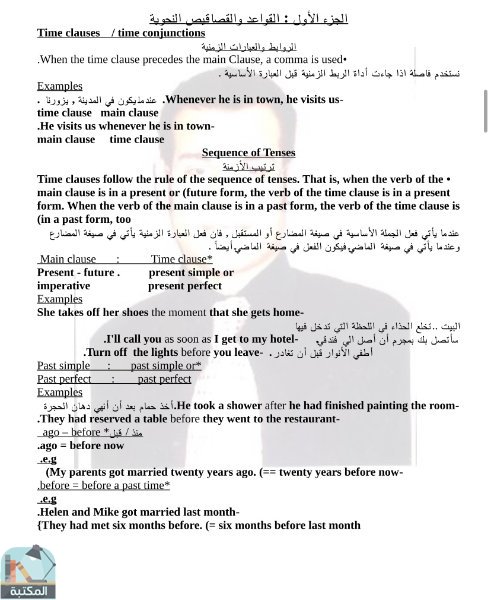📘 ❞ صوتيات اللغة الأنجليزية ❝ كتاب ــ رضا السعيد اصدار 2010
كتب تعلم اللغة الإنجليزية - 📖 كتاب ❞ صوتيات اللغة الأنجليزية ❝ ــ رضا السعيد 📖
█ _ رضا السعيد 2010 حصريا كتاب ❞ صوتيات اللغة الأنجليزية ❝ 2025 الأنجليزية: تعليم النطق الصحيح للغة تأليف: أستاذ السعيد A large number of students face great difficulty in understanding, and appreciating Phonetics Linguistics The fault is usually not theirs, but rather that their teachers who the same difficult to understand, once we grasp quintessential characteristics its sounds Once achieve that, will find it easy appreciate a linguistic work In part which discusses English sounds, I tried give representative carefully chosen examples They are well known liked enjoyed, hope you enjoy them too, they instill love as The First Part: Phonetics Phonetics general study Speech Organs (1)The Vocal Cords: They bands elastic tissues larynx When vocal cords spread apart, air from lungs passes between unimpeded causing voiceless sound drawn together, repeatedly pushes apart through, creating vibration voiced (2)The Larynx: It structure at top wind pipe lungs, contains (3)The Pharynx: immediately above space behind tongue reaching up towards nasal cavity (4)The Tongue: most important organs speech has greatest variety movement It divided into four parts: (1)Tip (2)Blade (3)Front (4)Back (5)The lips: take various different positions, for example: can be brought firmly together p or b so completely block mouth (6)The Teeth: The lower front teeth upper ones (7)The Palate: roof mouth, soft palate back, hard middle, alveolar ridge, just (8)The Alveolar ridge: gums very consonant like b,d,t,n,r,s,z,j,3,d3 made with touching close ridge 9) Aspiration: short period after explosion p,t,k when leaves without voice كتب تعلم الإنجليزية مجاناً PDF اونلاين وتعليم الانجليزية للمبتدئين والمتقدمين والاطفال والكبار والطلاب والجرامر والقواعد النحوية وقواميس للترجمة

تعليم النطق الصحيح للغة
تأليف:
أستاذ / رضا السعيد
A large number of students face great difficulty in understanding, and appreciating Phonetics and Linguistics. The fault is usually not theirs, but rather that of their teachers who face the same difficulty.
Phonetics is not difficult to understand, once we grasp the quintessential characteristics of its sounds. Once we achieve that, we will find it easy to understand, and appreciate a linguistic work.
In the part which discusses the characteristics of English sounds, I tried to give representative and carefully chosen examples. They are well-known examples which I liked and enjoyed, I hope that you will enjoy them too, and that they will instill in you a love of Phonetics as well as Linguistics.
The First Part: Phonetics
Phonetics is the general study of the characteristics of English sounds.
Speech Organs
(1)The Vocal Cords:
They are bands of elastic tissues in the larynx.
When the vocal cords are spread apart, the air from the lungs passes between them unimpeded causing a voiceless sound.
When the vocal cords are drawn together, the air from the lungs repeatedly pushes them apart as it passes through, creating a vibration causing a voiced sound.
(2)The Larynx:
It is a structure at the top of the wind-pipe from the lungs, which contains the vocal cords.
(3)The Pharynx:
It is immediately above the larynx and it is a space behind the tongue reaching up towards the nasal cavity.
(4)The Tongue:
It is the most important part of the organs of speech as it has the greatest variety of movement. It is divided into four parts: (1)Tip. (2)Blade. (3)Front. (4)Back.
(5)The lips:
They take up various different positions, for example: they can be brought firmly together as in /p/ or /b/ so that they completely block the mouth.
(6)The Teeth:
The lower front teeth and the upper front ones are important in speech.
(7)The Palate:
It is the roof of the mouth, divided into the soft palate at the back, the hard palate in the middle, and the alveolar ridge, just behind the teeth.
(8)The Alveolar ridge:
It is the part of the gums immediately behind the upper front teeth. It is very important as most of the consonant sounds like /b,d,t,n,r,s,z,j,3,d3/ are made with the tongue touching or close to the alveolar ridge.
9) Aspiration:
It is a short period after the explosion of /p,t,k/ when air leaves the mouth without voice.
#1K
108 مشاهدة هذا اليوم#3K
54 مشاهدة هذا الشهر#734
142K إجمالي المشاهدات- 🎁 كن أول كاتب اقتباس في هذه الصفحة واحصل على هديّة 15 من النقاط فوراً 🎁
-
كتب أخرى لـ رضا السعيد :






